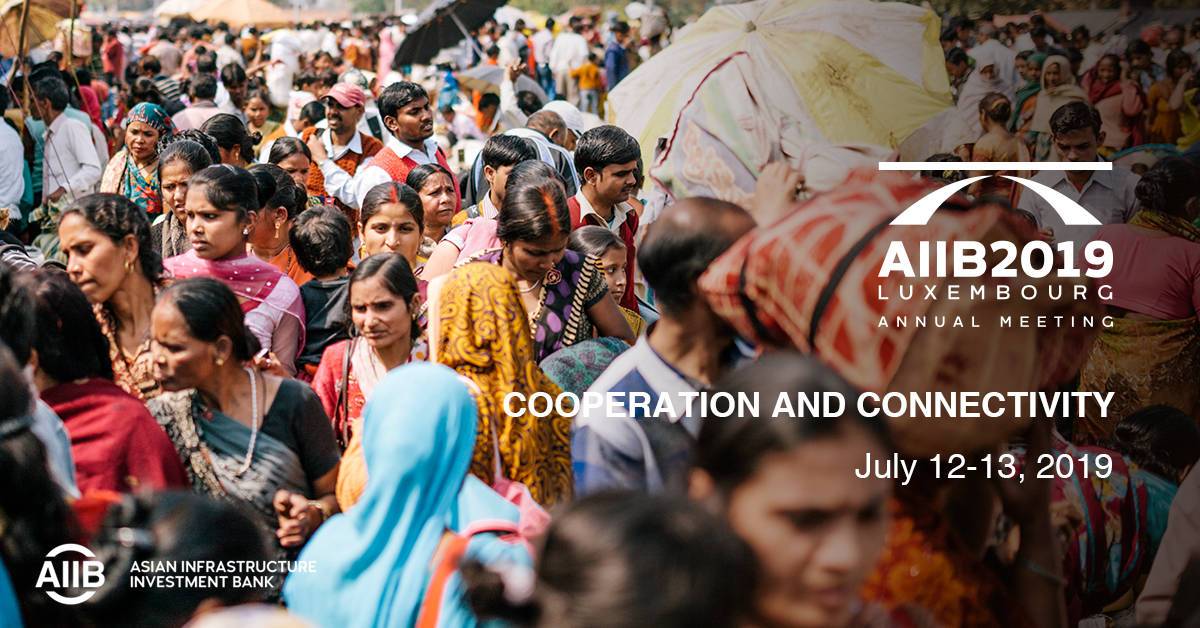Today at the 2019 Annual Meeting of the Asian Infrastructure Investment Bank (AIIB), I look forward to a discussion on where the actual gaps are with respect to equality of access for men and women to the benefits of infrastructure; and what data needs to be collected to measure the gaps and the impact of measures taken to close the gaps.
Infrastructure often overlooks the fact that different segments of the population may have differing needs and may benefit unequally from infrastructure projects. Poor infrastructure practices that do not reflect principles of inclusiveness can create real barriers for segments of the population to effectively participate in the economy, resulting in suboptimal economic and social outcomes.
Women remain disproportionately affected by inadequate infrastructure. Although women and girls often use infrastructure differently, women are frequently marginalized during identification, design and implementation of infrastructure projects and services received. Lack of access to water and electricity results in women and girls spending significant amounts of time on domestic chores, diverting them from pursuing education and income generation. Poor urban planning such as inadequate street lighting or poorly maintained facilities can expose women to elevated risks of harassment and sexual violence.
Furthermore, women are often under-represented in the infrastructure sector labor force—they do not have equal access to well-paying jobs created by infrastructure investments.
The lack of gender-disaggregated data is a major impediment to informing infrastructure planning. For example, mobility surveys undertaken in transport projects rarely consider differences across gender and other demographic and socioeconomic characteristics (for example, age and income). Another area that lacks sex-disaggregated data is road safety.
Administrative data on road safety—which typically includes police and health facility records, vital registration and death certification as well as insurance data—is valuable from a gender point of view, if sex-disaggregated. However, they seldom are.
At the 2018 AIIB Annual Meeting held in Mumbai, Harvard professor Rohini Pande spoke about the invisible infrastructure that is needed to ensure that the physical infrastructure achieves its objectives. Invisible infrastructure is defined as the social and human systems that enable citizens to realize their capabilities and escape poverty. Rural roads, by themselves, may not bring jobs to a village. For many male villagers, the road will enable them to get on a bus, go to the town and find work there. However, the road may not suffice for a poor female villager, since social norms and safety concerns may prevent her from getting on the bus in the first place. Indeed, transport projects like this often do not consider door-to-door challenges women face.
When measuring actual access to infrastructure—specifically the gender gaps—there is a need to go beyond collecting quantitative data and usage of the asset. There is a need to understand what may be preventing usage and the reasons.
Today in Luxembourg, the discussion panel “Gender Equality for Sustainable Infrastructure” will provide an opportunity to discuss gender gaps in access to infrastructure, how they can be addressed and—very importantly—how the gaps can be measured. As one of the youngest multilateral development banks, we hope that we can learn from this panel the experience and lessons from representatives of two other international financial institutions, representatives from two national government agencies and a city (Vienna) on how infrastructure can be designed, constructed and operated to benefit both men and women.
Beijing, December 04, 2025
Powering Asia's Future: Singapore's Critical Role in Sustainable Capital Mobilization
Singapore has a long track record of turning ambition into capital. As the region accelerates its energy transition, that role has never been more vital. From hydropower in Lao PDR to offshore wind in Vietnam, Asia’s clean-energy potential is immense. But without sufficient private investment, much of it will remain untapped.
READ MOREBeijing, November 28, 2025
AIIB Reaches 700 Staff as It Approaches 10 Years
AIIB celebrated a new milestone in its growth journey, welcoming its 700th professional staff member. Mark Eghan, a Ghana national, joined the Bank as Senior Investment Solutions Specialist in the Sectors, Themes and Finance Solutions Department. With Mark’s onboarding, AIIB now represents 81 economies within its staff community, reinforcing a commitment to building a diverse and inclusive workforce that reflects our global membership.
READ MOREBelém, November 26, 2025
From the Amazon to Action: AIIB at COP30—Partnering for Scaled and Inclusive Climate Solutions
COP30 in Belém, Brazil—the first UN Climate Change Conference held in the Amazon since the 1992 Rio Earth Summit—marked a pivotal moment to assess progress and identify practical approaches for implementation. Dubbed by the Brazilian Presidency as the “COP of Implementation,” the conference underscored the global imperative to turn commitments into concrete action.
READ MOREBeijing, October 30, 2025
Building Biodiversity into Development Decisions
As we look toward COP30 in Belém, where nature and biodiversity will be key agenda items, AIIB is working with partners to build on concepts outlined in our Nature as Infrastructure report and create solutions that can help unlock new flows of capital toward conservation, restoration, and sustainable management. The goal is to create practical pathways that make investing in nature both financially viable and socially beneficial.
READ MORE

